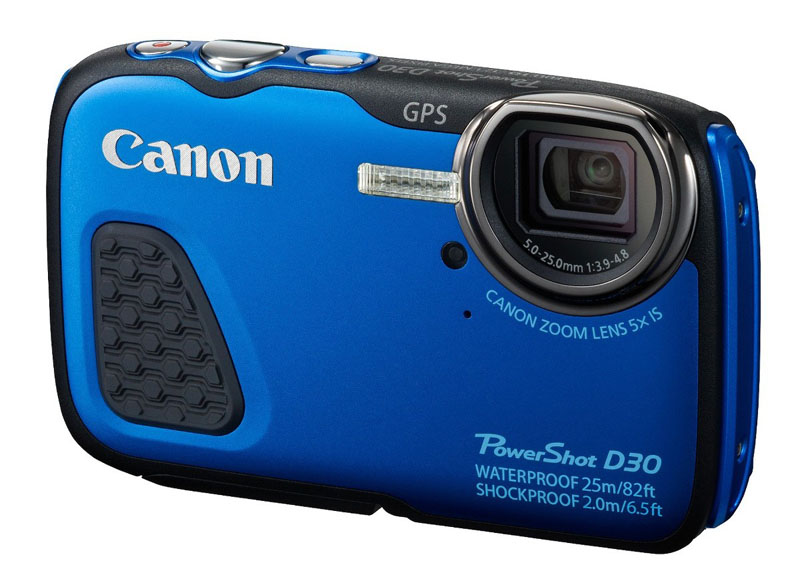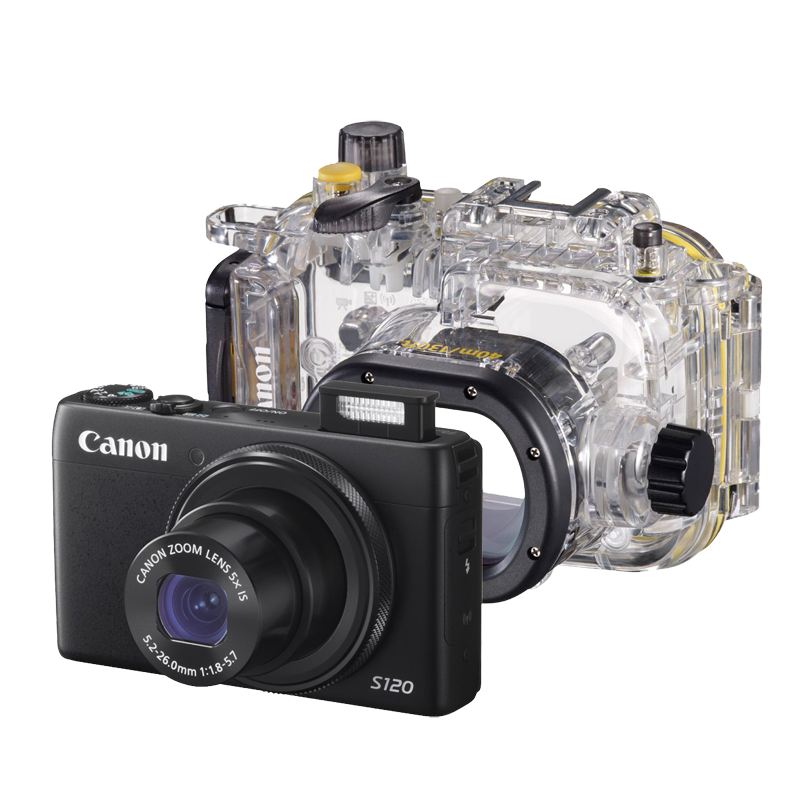Exploring the Underwater World
Summer is here! Are you ready for the sun and beach? Different from what we see on land, the stunning ocean scenery underwater is a treasure to explore. So why not dive into the ocean and capture the wonderful underwater world with a digital camera? Before you go, let’s check out the useful tips and sharing from professional underwater videographer Raymond Man.
Different Set of Skills Required for Underwater Photography
Even if you are a master in landscape photography, you may still need to learn it all over from the basic when it comes to underwater shooting as the two kinds of shooting have huge differences in nature. According to Raymond, two things matter most in underwater photography – equipment and light source. For equipment, we will need a waterproof digital camera and sometimes a waterproof case. DSLR users need to be aware that changing of lens is impossible underwater; so if you go with a wide-angle lens you can only stick with the wide focal range. For light source, as we cannot rely on sunlight or flash light for illumination like we shoot on land, we can only use artificial lighting with much stronger output power when we dive at a depth of 10 or 20 meters. Raymond explains that the light source in water needs to have twice the output power than that on land under the same shooting distance, whether it is fill flash or flash light. Therefore, we need to consider carefully about the equipment to bring before we go. It is always wise to bring a waterproof torch for searching of marine life as well as providing fill lighting when shooting.
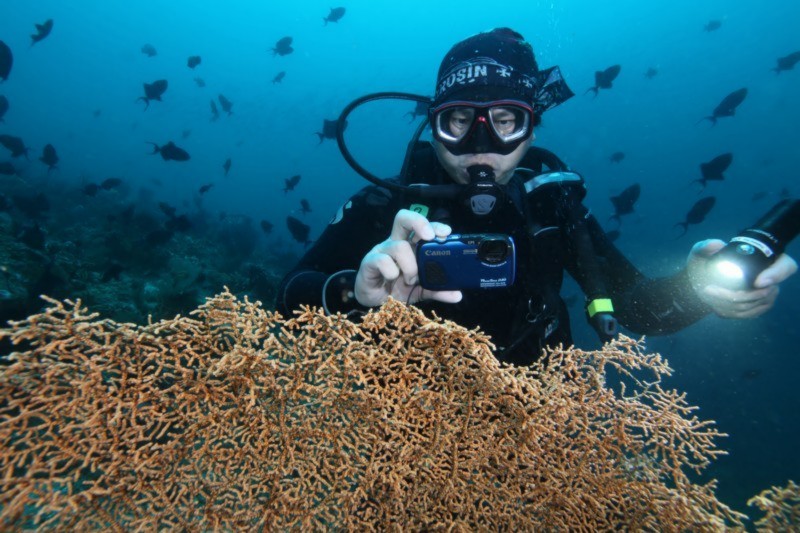
Sometimes a waterproof torch can be of great help in underwater photography.
TIPS 1: Useful Skills for Beautiful Images
Stunning underwater photos often feature a dark background to help accentuate the colorful marine life. A little tip from Raymond is to shoot from a low angle for a dimmer background.
DSLR and DC to Serve Different Purposes
DSLR cameras and digital compact cameras (DC) are useful in different applications in underwater photography. A DSLR camera paired with a wide-angle lens is suitable for capturing wide open underwater scenery and large marine life, and it also works well with macro lens to capture tiny creatures. Alternatively, a digital compact camera can offer great flexibility and ease-of-use for underwater shooting.
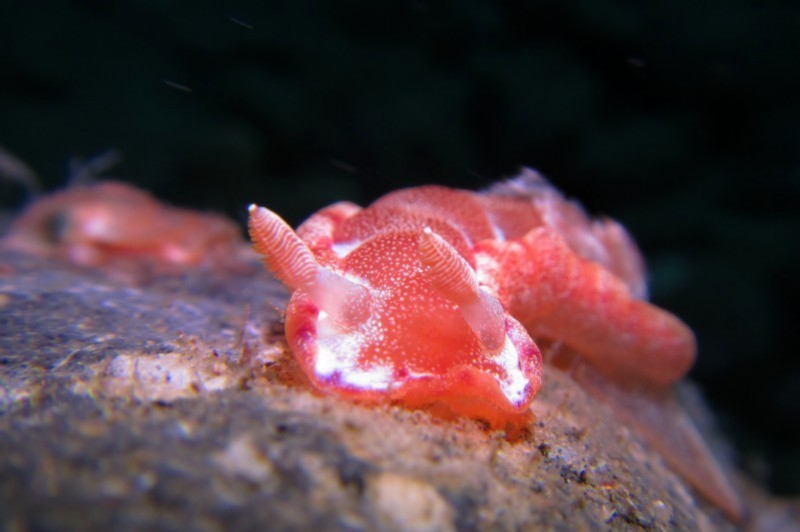
We can turn the background into complete darkness to outstand the subject by shooting from a right angle. Photo by PowerShot D30
TIPS 2: Good Locations in Hong Kong for Underwater Photography
Hong Kong is in fact a good place for underwater photography, for example in the sea near Sai Kung. As a piece of advice for beginners, Raymond suggests to start with simple photographic subjects such as conch, plant, coral and slow-moving invertebrates for higher success rate of capture and satisfaction.
DC for Greater Shooting Flexibility
To practice underwater shooting, easy-to-use camera such as digital compact camera with all weather body (e.g. PowerShot D30) or PowerShot series digital compact cameras with matching waterproof cases are recommended by Raymond. Despite the common perception that a DSLR camera can deliver better image quality, selecting the right equipment to use is more important for underwater shooting. It is difficult for beginners to operate a DSLR camera in the water, as the gear is bulky and hard to control after housed in a waterproof case. On the contrary, a digital compact camera with all weather protection is compact and lightweight, offering ease-of-control and the ability to zoom and take macro shots. It makes shooting much easier for beginners, allowing them to create stunning images comparable to a DSLR camera simply with appropriate lighting and the right camera’s setting.
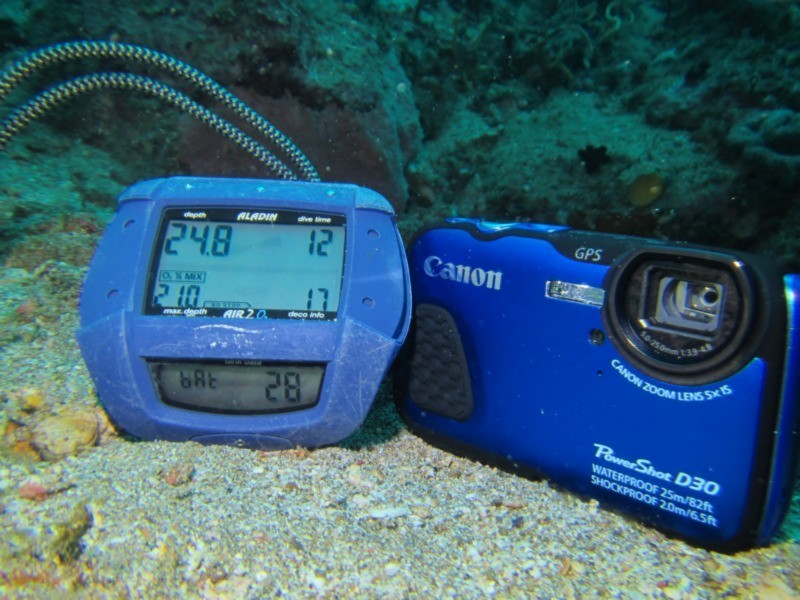
Canon PowerShot D30 offers waterproof capability of up to 25 meters without additional waterproof case.
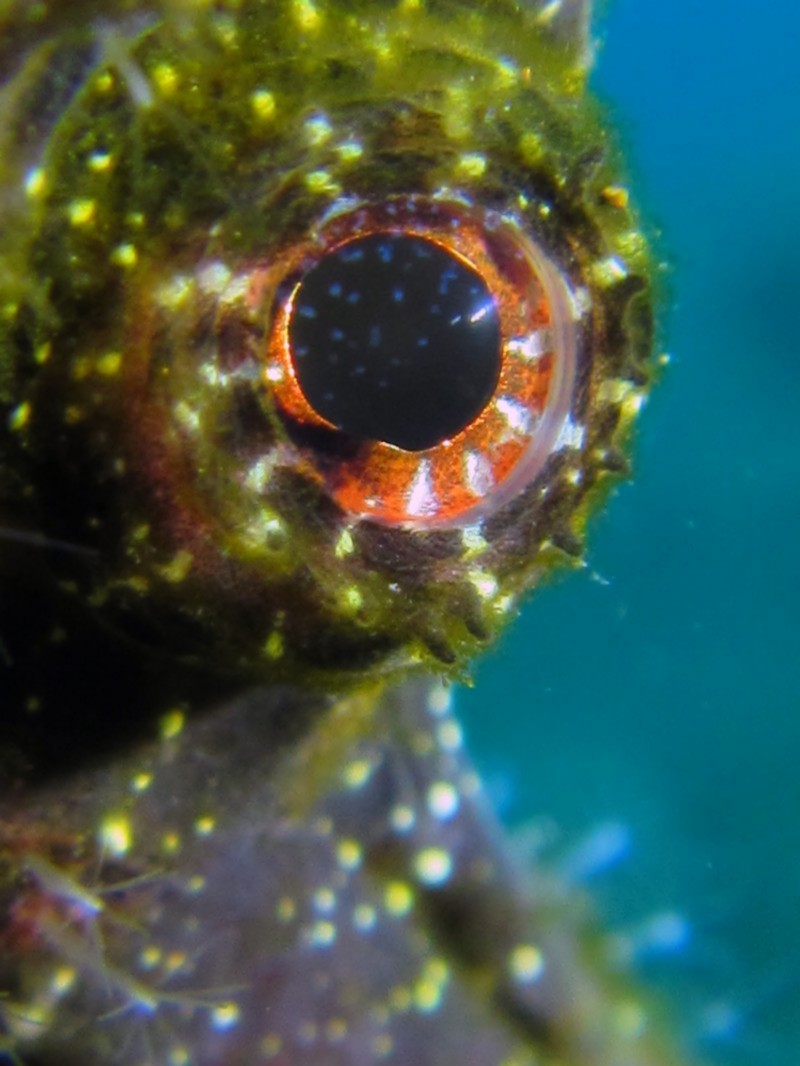
A close-up shot using the camera’s macro mode to capture the contour and details of the eye of a sea horse. Photo by PowerShot D30.
White Balance Setting
Very few people actually pay attention to white balance setting when shooting underwater. As red light does not reach ocean depths, the colors captured in the water will be different with that captured on the land. Raymond mentions that an auto white balance is normally sufficient as there is flash light or fill flash. However, when shooting with high ISO setting and without any external light source, we should use the camera’s built-in underwater white balance mode or custom white balance setting for correction, bringing the colors back to normal by retrieving the red.
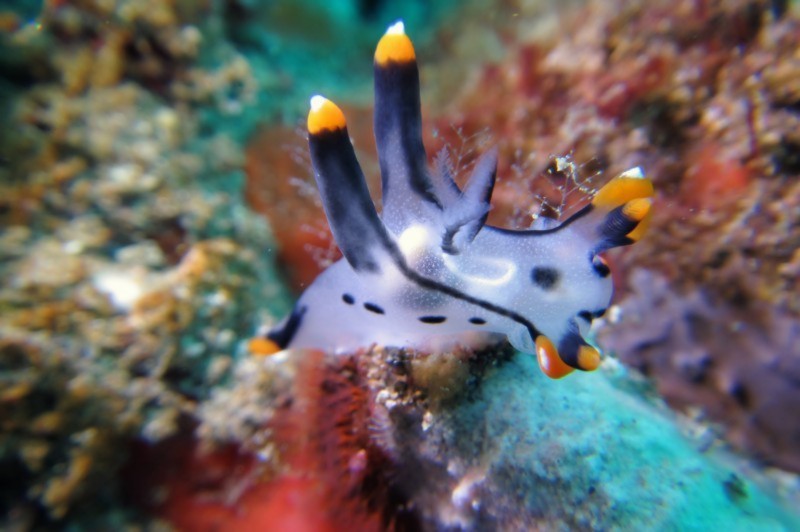
This shot uses manual white balance setting to correct the color cast in underwater photos and reproduce rich and vivid colors. Photo by PowerShot D30.
TIPS 3: Always Safety First
What is the first step to underwater photography? To learn how to dive, of course, and it is better to start shooting after you become more experienced in diving. Raymond reminds all diving beginners who are interested in photography to always put safety and alertness in first place. It is not uncommon that beginners may forget about the rules of safety or time limit when getting too excited. Accidents may also happen when they go deeper in water beyond their limit to chase after a marine life for photos. Therefore, it is important to put safety first while enjoying the fun of underwater shooting.
Easy to Use
PowerShot D30 can be used underwater at a depth of 25 meters, while PowerShot series digital compact cameras offer waterproof capability of up to 40 meters when housed in waterproof cases. Normally speaking, beginners in open water diving can only dive to a maximum depth of 18 meters, so these cameras can meet the needs of underwater shooting in most situations. Maintenance is easy for beginners too. All we need to do is to rinse the camera well (in fresh water) after use and let it dry, and check if there is any damage around the waterproof rubber rings. Besides, these cameras support HD movie shooting so you can capture the stunning underwater world in both stills and movies.
Raymond, being a professional underwater photographer, will also use all weather digital compact camera in his shooting. He mentions that PowerShot D30 is not only a perfect gear for beginners, but also one of the essential equipment for professionals. The camera is highly affordable, easy to use on its own without any accessory needed. We can also bring a fill flash for better photo result, allowing beginners to enjoy diving and shooting with simple and lightweight equipment. Usually Raymond will bring a DSLR camera with wide-angle lens and a PowerShot D30 as a second camera for shooting. As change of lens is impossible in water, a second camera can serve the purpose of taking macro shots to make sure all the scenes and actions are well captured.
This HD movie captured by PowerShot D30 is comparable to production using a DSLR camera.
The advantages of using a DSLR camera are its powerful and versatile functionality, plus accessory expandability to help create the perfect images. However, it takes a lot of practice and time for beginners to master it. Alternatively, a digital compact camera with all weather body is good for beginners to practice shooting before upgrading to a DSLR camera.
Canon PowerShot D30
Equipped with a 28mm wide-angle 5x optical zoom lens and an optical Image Stabilizer (IS), Canon PowerShot D30 digital compact camera features an all weather body* that is 25m waterproof, 2m shockproof, dustproof and -10оC cold resistant. It is built with a GPS function and supports 1cm Macro and Underwater Macro modes. Coupled with full HD movie shooting in 1920 x 1080 resolution and 240fps Super Slow Motion movie mode, the camera is capable of creating high quality images both on land or in the water.
* Waterproof capability meets JIS/IEC protection class IPX8 up to 60 minutes, dustproof capability meets JIS/IEC protection class IP6X, shock resistant capability based on MIL Standard 810F Method 516.5 Selecting Procedure IV (A US Defense Standard). The camera is subjected to Canon standard testing conditions. However, it is not guaranteed that this camera will not damage or malfunction
In addition to Canon PowerShot D30, the PowerShot series cameras can be housed in dedicated waterproof cases for shooting at a depth of 40 meters underwater. Dedicated waterproof cases include: WP-DC53 for PowerShot G1 X Mark II, WP-DC52 for PowerShot G16 and WP-DC51 for PowerShot S120.
